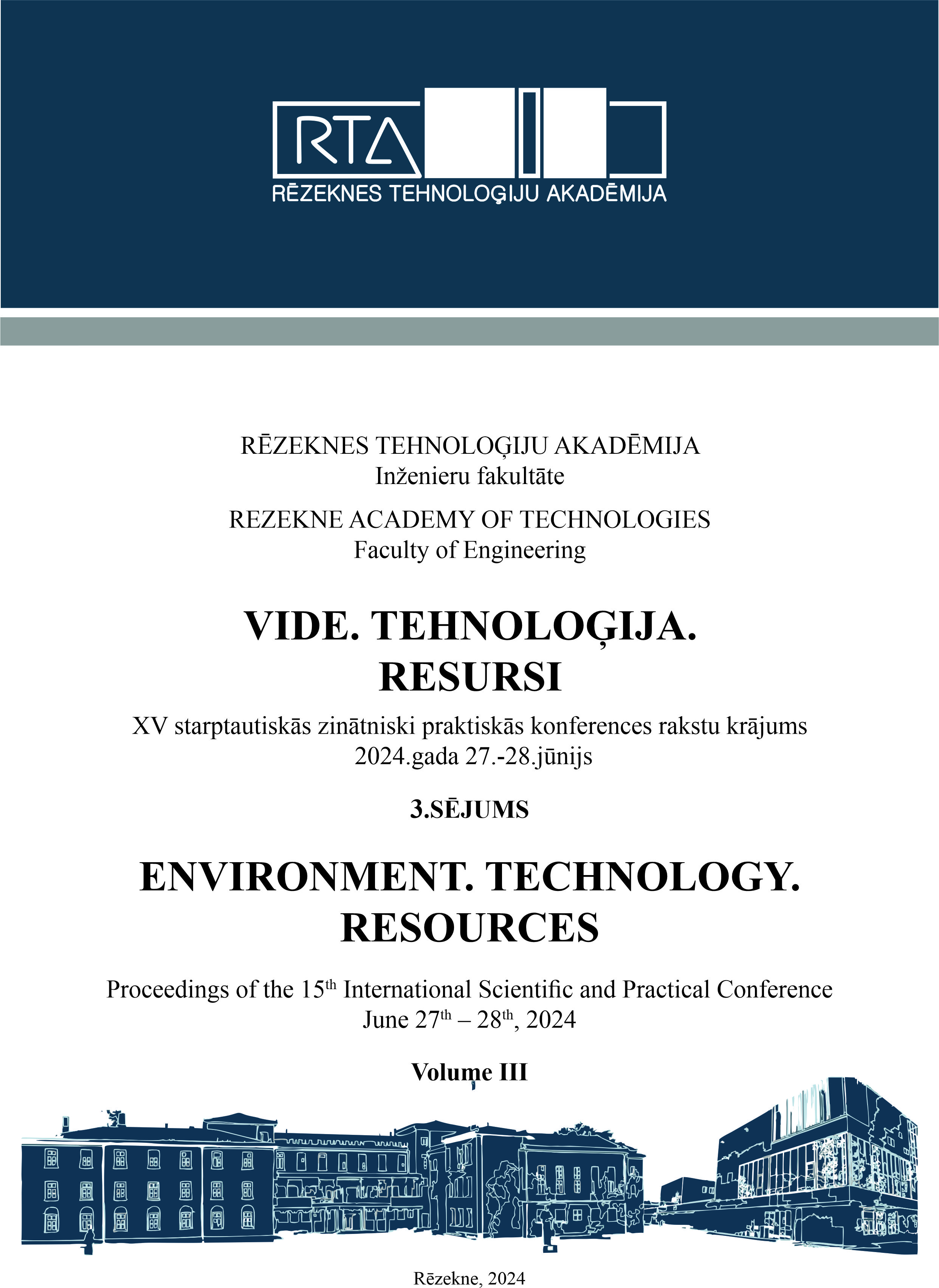ENHANCED EFFICIENCY IN TWO-COMPONENT INJECTION MOLDING PRODUCT FOR AUTOMOTIVE APPLICATIONS
DOI:
https://doi.org/10.17770/etr2024vol3.8144Keywords:
CAD modeling, filling analysis, two-component molding, optimization, injection molding, polymerAbstract
The presented study is focused on an optimization analysis of a complex automotive component consisting of two parts with different materials. The research examines the impact of various runner configurations, cooling parameters, gate positioning, and melt temperature distribution within the mold. The paper emphasizes the advantages and applications of integrating such optimization techniques. Parametric and geometric optimization of the model is done, along with the evaluation of simulated filling processes, as clarified for the paper's objectives. Additionally, a methodical approach is outlined, clearing the process of operational rate selection, material property analysis, control parameter establishment, and preemptive simulations.Downloads
References
M. Seyednourani, M. Yildiz, H.S. Sas, 2021. A two-stage optimization methodology for gate and vent locations and distribution media layout for liquid composite molding process. Composites Part A: Applied Science and Manufacturing 149, 106522. https://doi.org/10.1016/j.compositesa.2021.106522
B. Liu, S. Bickerton, S.G. Advani, 1996. Modelling and simulation of resin transfer moulding (RTM)—gate control, venting and dry spot prediction. Composites Part A: Applied Science and Manufacturing 27, 135–141. https://doi.org/10.1016/1359-835X(95)00012-Q
M. Zagorski, Y. Sofronov, D. Ivanova. Investigation of different FDM/FFF 3D printing methods for improving the surface quality of 3D printed parts. 10th International Scientific Conference on Engineering, Technologies and Systems, TECHSYS 2021
K. Kamberov, M. Semkov, B. Zlatev. Design considerations through study of thermal behaviour of smart poles. 4th EAI International Conference on Future Access Enablers of Ubiquitous and Intelligent Infrastructures, FABULOUS 2019.
S. Hancock, L. Harper, 2023. Cost, rate, and robustness, in: Design and Manufacture of Structural Composites. Elsevier, pp. 447–471. https://doi.org/10.1016/B978-0-12-819160-6.00022-6
M.R. Mansor, S.H.S.M. Fadzullah, A.H. Nurfaizey, 2021. Life cycle assessment (LCA) analysis of composite products in automotive applications, in: Biocomposite and Synthetic Composites for Automotive Applications. Elsevier, pp. 147–172. https://doi.org/10.1016/B978-0-12-820559-4.00005-5
S.H. Han, E.J. Cho, H.C. Lee, K. Jeong, S.S. Kim, 2015. Study on high-speed RTM to reduce the impregnation time of carbon/epoxy composites. Composite Structures 119, 50–58. https://doi.org/10.1016/j.compstruct.2014.08.023
E. Poodts, G. Minak, L. Mazzocchetti, L. Giorgini, 2014. Fabrication, process simulation and testing of a thick CFRP component using the RTM process. Composites Part B: Engineering 56, 673–680. https://doi.org/10.1016/j.compositesb.2013.08.088
D. Heider, 2019. High-Pressure Resin Transfer Molding (HP-RTM). University of Delaware.
L. Kärger, A. Bernath, F. Fritz, S. Galkin, D. Magagnato, A. Oeckerath, A. Schön, F. Henning, 2015. Development and validation of a CAE chain for unidirectional fibre reinforced composite components. Composite Structures 132, 350–358. https://doi.org/10.1016/j.compstruct.2015.05.047
S.M. Afazov, A.A. Becker, T.H. Hyde, 2012. Development of a Finite Element Data Exchange System for chain simulation of manufacturing processes. Advances in Engineering Software 47, 104–113. https://doi.org/10.1016/j.advengsoft.2011.12.011
S. Bickerton, P. Šimáček, S.E. Guglielmi, S.G. Advani, 1997. Investigation of draping and its effects on the mold filling process during manufacturing of a compound curved composite part. Composites Part A: Applied Science and Manufacturing 28, 801–816. https://doi.org/10.1016/S1359-835X(97)00033-X
L. Kroll, 2023. Modeling, integrative simulation, and optimization, in: Kroll, L. (Ed.), Multifunctional Lightweight Structures. Springer Berlin Heidelberg, Berlin, Heidelberg, pp. 563–629. https://doi.org/10.1007/978-3-662-62217-9_8
S. Jiang, C. Zhang, B. Wang, 2002. Optimum arrangement of gate and vent locations for RTM process design using a mesh distance-based approach. Composites Part A: Applied Science and Manufacturing 33, 471–481. https://doi.org/10.1016/S1359-835X(01)00146-4
Downloads
Published
Issue
Section
License
Copyright (c) 2024 Todor Todorov, Georgi Todorov, Ivan Ivanov

This work is licensed under a Creative Commons Attribution 4.0 International License.



